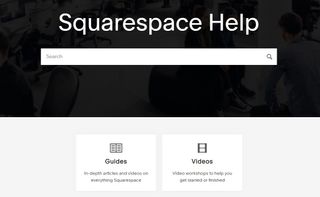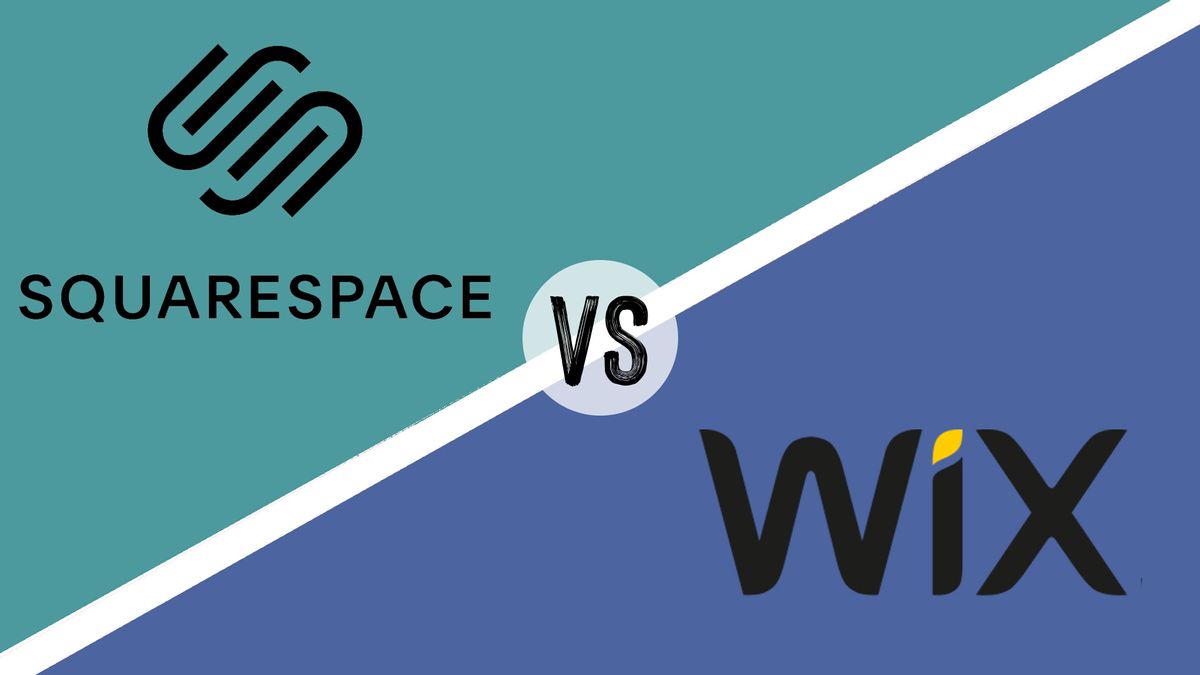Squarespace vs Wix is a battle between two of the most popular website builders for individuals, creatives and small businesses. On paper, the propositions aren’t hugely different. Both offer two options for getting online quickly and easily: a text-based AI generator and templates, and both offer options for including ecommerce.
Wix is a little cheaper for business plans and even has a free plan, while Squarespace’s templates tend to be more sleek, but how they compare in practice? We’ve tested them both, and they both feature in our guides to the best website builder for small business and the best website builder for artists, so we decided to compare them head-to-head.
In this Squarespace vs Wix comparison, we’ll aim to decide which of these popular website builders is best for beginners, for creatives and for business. For more options, see our guides to the We also have a guide to the best free blog websites.
Wix is one of the most popular website builders around today, with a fairly intuitive editing interface, a huge template library. It also has an AI web builder, which aims to make creating a site quicker and easier, but it’s quite hit and miss and turns out some generic designs. On the other hand, Squarespace is known for its professional templates and great selection of native features, although its editor takes many people longer to learn. So which is best?
Squarespace vs Wix compared
Features

Both Squarespace and Wix boast solid features to help users get a website online quickly and easily. They both now feature AI-powered web builders. The idea is that these can save time by generating a site design for you based on your text answers to a few questions. In practice we found the results to be fairly generic and the process more of a hassle than a help, so we recommend sticking to their traditional template options if have an idea of what you want your site to look like.
Both platforms have excellent template libraries, which means you can pick a template and customise it to your liking and replace all the content with your own. Squarespace has made a name for itself in the website building space due to its extremely attractive, professionally designed themes. On the other hand, Wix has a huge design library featuring close to 1,000 templates, which means that there’s really something for everyone.
Squarespace prides itself on its impressive range of native features, which means that you should be able to find almost everything you want without needing any third-party integration. But there are also various extensions available to help you manage taxes, e-commerce, invoicing, and more. Meawhile, Wix has a huge App Market, which allows you to buy all kinds of add-on features for your site, from email marketing integrations to dropshipping apps and portfolio optimisation tools.
This can provide a lot of flexibility, although Wix’s editor provides less customisation in terms of design. It is easier to use, however, whereas Squarespace’s editor involves a bit of a learning curve. Both also offer a range of ecommerce options. We found Squarespace’s online selling integrations to be particularly good. Not only can you sell physical products, but also digital downloads, appointments, tickets, and more.
Winner: It’s very close. We think Wix has more options overall, and it should be easier for beginners, but Squarespace offers great ecommerce features and better template designs for creatives.
Performance
Wix and Squarespace use fundamentally different editing styles, which means that it’s important to carefully compare the overall performance of both options. When getting started with Squarespace, you will be guided through a neat questionnaire asking about what type of website you want, what your goals are, and what stage of your project you’re at. Then, you will be shown a selection of the most appropriate templates to base your site on. Choose one and begin editing.
The Squarespace editor itself is quite confusing, even for those of us who have used it numerous times in the past. If you’re a complete beginner, expect to spend a significant amount of time just familiarising yourself with the user interface. But if you’re willing to put the time in, you will find a decent number of advanced tools here. Squarespace uses a block-based editor, which means you will be confined to placing elements in pre-coded positions. However, the level of customisation is still quite good – at least, it is once you become comfortable with the user interface.

Wix actually has two different website creation options, the Wix Editor and the Wix ADI. Wix ADI uses artificial intelligence, and is quite similar to Squarespace, albeit easier to use. You will be confined to placing design elements in pre-coded positions, although you can switch your ADI site to the Wix Editor for more flexibility.
The Wix Editor is where things really start to get interesting. It can be a little confusing to use because of the huge number of customisation options, but it’s really worth spending the time to get the hang of.
Basically, the Wix Editor enables you to drag and drop elements to any position on your page, with few constraints. You can even add custom code for more advanced editing if required.
All things considered, Wix ADI is our recommended choice here for website-building novices. However, it’s also hard to best the Wix Editor if you’re willing to spend a little time getting the hang of it.
Support

Squarespace offers both email and live-chat support, although the live chat isn’t always online. The service also provides a selection of self-help resources, including guides, webinars, and tutorial videos, along with an active community forum.
Unfortunately, support is the area where Wix really falls down. It offers both phone (callback) and email contact options, but in our experience, response times can range to more than two days. Luckily, the Wix knowledge base is excellent, but it would have been nice to at least see some form of live chat or instant phone service.
Pricing and plans
Both Squarespace and Wix offer a range of subscription options, and there isn’t a huge difference in price. For starters, Squarespace’s four plans range from $16 to $52 per month ($12 to $40 with an annual subscription). All plans come with a 14-day free trial, but there’s no free-forever option.
Squarespace’s $16 per month Personal plan is quite limited, but it should have everything you need to build a simple portfolio website. A Business subscription ($23 per month) unlocks advanced marketing and basic e-commerce tools, while the Basic Commerce ($28 per month) and Advanced Commerce ($42 per month) add increasingly powerful online selling features.
On the other hand, Wix’s free-forever plan offers an excellent way for beginners to familiarise themselves with the website-building process – without having to spend a cent. It is quite limited, and you’ll have a wix.com URL, which doesn’t look very professional, but it’s a good place to start.
If you want to upgrade to a paid plan with Wix, these start from as little as $11 per month for a very limited plan with 2GB of storage. Once again, though, this should be more than enough for a basic portfolio if you’re not uploading a lot of images or videos. The Core plan from $11 per month adds the ability to accept payments, though you will need a Business or Business Elite plan for more advanced ecom features.
Verdict
Both Squarespace and Wix deserve their reputations as two of the world’s best website builders. Both are certainly viable options for businesses, creatives and beginners alike. However, we think each has a stronger appeal to a particular user.
Based on our testing, we thing Wix is easier to use. It has a number of beginner-friendly features, including an intuitive editing interface. It also has cheaper prices and even a free plan. We think this makes it the best option for beginners who don’t want to have to spend much time creating their site. On the other hand, we found Squarespace’s templates to be better designed, and they tend to look sleeker for displaying portfolios of creative work. Squarespace also offers slightly better customer service. We think this makes it the winning option for professional creatives and businesses.
FAQs
How do I use a website builder?
Website builders make it easy to create a website and get it online by offering either an AI-powered designer, which generates a site design based on your responses to a series of questions, or by providing templates that you can customise. In most cases, they also provide hosting, which is where you store all of the data online in order to allow your site to be accessed from anywhere in the world.
For more on web design see our roundup of WordPress tutorials and our guide to how to make an artist website.
Is Wix os Squarespace better for creatives?
Generally, we find Squarespace better for visual creatives like artists and photographers since it has a lot of smart minimalist templates designed with these sectors in mind. That said, Wix often works out cheaper, and its free plan may appeal to creatives who are just starting out with their online venture.
